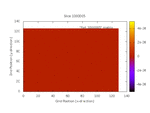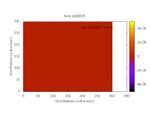holden1992
Newbie level 6

Currently, I have a working 3D FDTD code with the Total Field/Scattered Field formulation. I am using a 3D plane wave constrained to propagate in one direction. However, I get severe leakage/reflections at the TFSF box edges (most likely a bounds issue, but I cannot figure out where I'm going wrong). Therefore, I am attempting to implement a 1D auxiliary field as a hard source (method presented in Taflove). However, I cannot figure out how to implement this 1D auxiliary field into my code.
Also, if anyone has any knowledge with a 3D Perfectly Matched Layer Absorbing Boundary Conditions, it would be much appreciated!
P.S. I wrote my code in Fortran90.
Attached screenshots of the total electric field (incident) propagating in the z-direction.
https://obrazki.elektroda.pl/7291692700_1416344333.png
https://obrazki.elektroda.pl/3198694900_1416344334.png
https://obrazki.elektroda.pl/2081102900_1416344335.png
https://obrazki.elektroda.pl/5665320500_1416344336.png
Also, if anyone has any knowledge with a 3D Perfectly Matched Layer Absorbing Boundary Conditions, it would be much appreciated!
P.S. I wrote my code in Fortran90.
Attached screenshots of the total electric field (incident) propagating in the z-direction.
https://obrazki.elektroda.pl/7291692700_1416344333.png
https://obrazki.elektroda.pl/3198694900_1416344334.png
https://obrazki.elektroda.pl/2081102900_1416344335.png
https://obrazki.elektroda.pl/5665320500_1416344336.png




